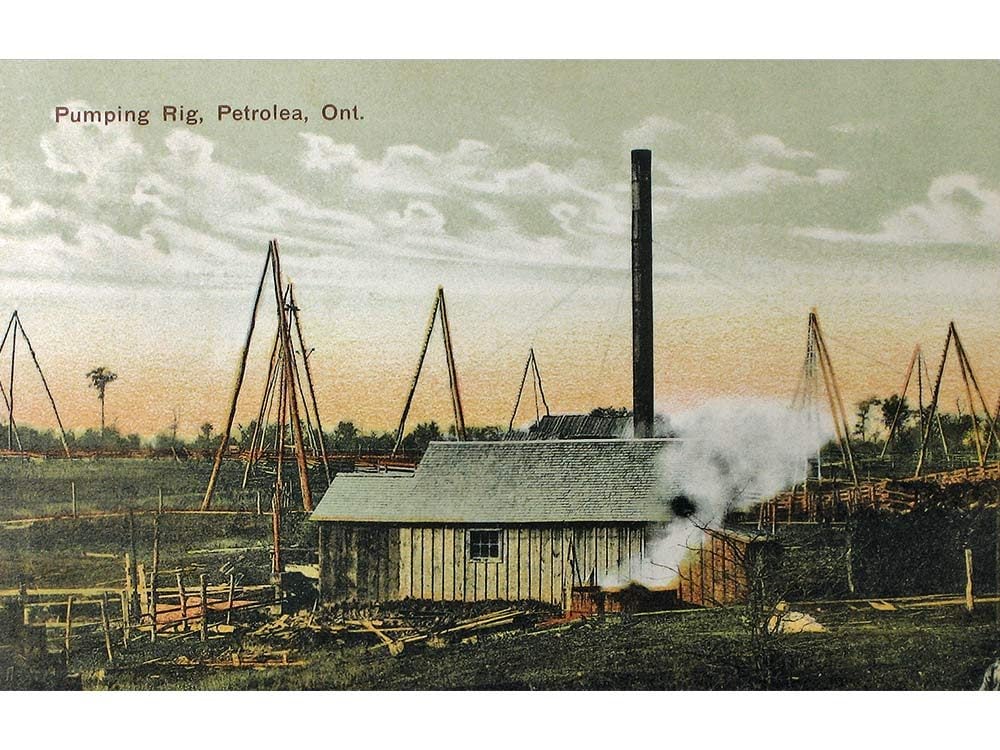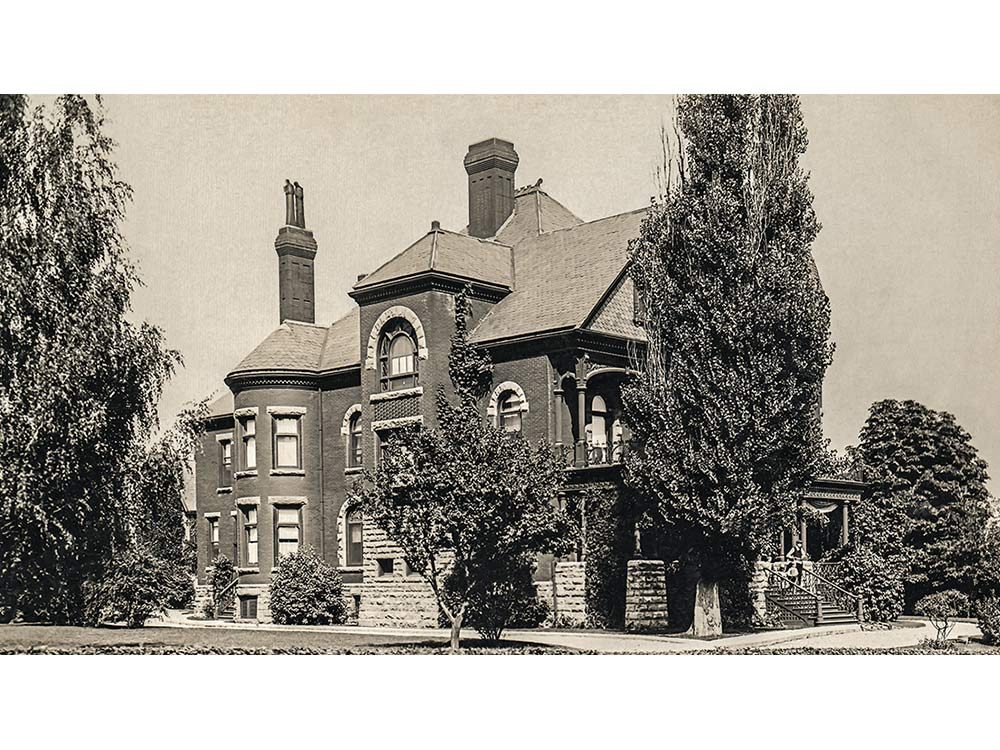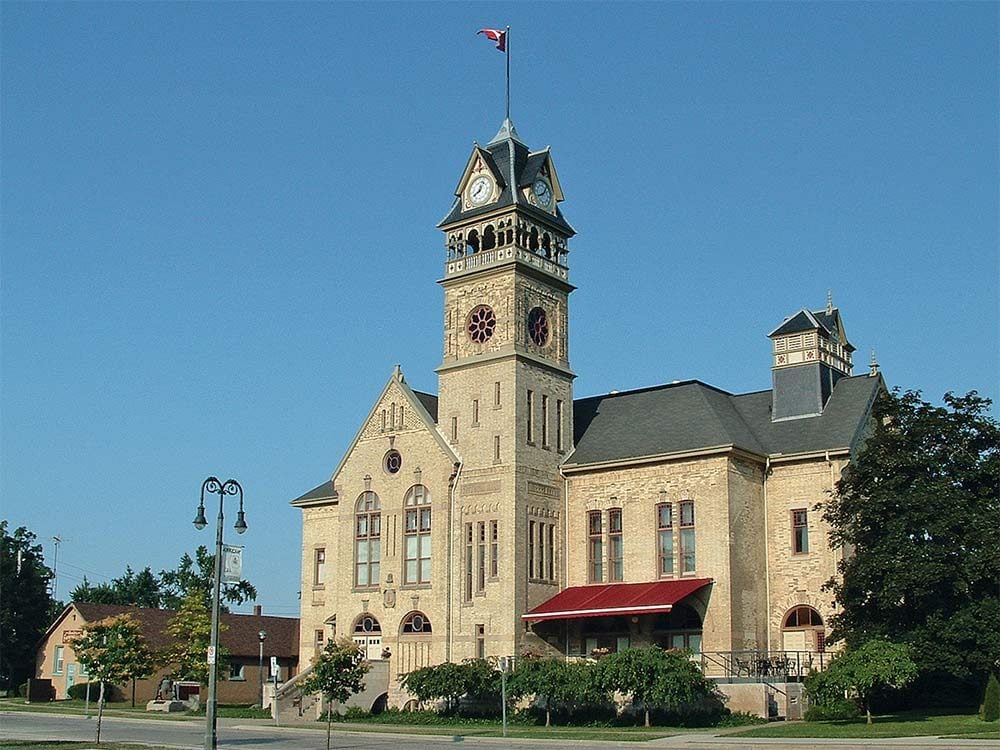
Petrolia, Ontario—My hometown
As a child, I was a little ashamed of my hometown of Petrolia, Ontario. Relatives and other visitors almost always made snide remarks about the distinct odour that would envelop them as they approached the outskirts of town. Living there on a daily basis made residents immune to the smell, and, in fact, unless pointed out to me, I never noticed the aroma. Not until I was a grown woman and working in the tourism industry did I realize the significance of that smell to the town, and, indeed, to the entire world. This is where the Canadian oil industry originated, growing from its fledging roots in nearby Oil Springs to local fruition in Petrolia (known for a little while as Petrolea).
The “black gold” that those first tenacious pioneer drillers pumped out of the ground in the 1860s was the foundation on which our little town was built. Incorporated in 1874, by the 1880s, with a population of 5,000, Petrolia was one of the richest towns per capita in Canada. All because of a foul-smelling, gooey substance extracted from the ground that would revolutionize the world and bring about changes never before imagined.
The history of Petrolia reminds me that fact is almost always more fascinating than fiction. Many intriguing stories and books have been written about Canadian oil barons and our sought-after “foreign drillers”—those brave, adventurous individuals who took with them to the far corners of the globe their hard-earned industry expertise and knowledge, and assisted in the development of major oilfields around the world.

Historical structures in Petrolia, Ontario
Past opulence from bygone days can be seen while driving or taking a leisurely walk through town. Take a stroll through Crescent Park, and as you gaze at the elegant homes, pay particular attention to the street signs, as there is a story hidden behind each and every one. For instance, stop at the top of the hill on Tank Street and be awed by the spectacular architecture of the Fairbank House, its beauty now sadly diminished but resolutely shining through. On King Street sits Nemo Hall, another architectural beauty, thankfully restored and nurtured.
A few historical industrial buildings also remain intact. As they have for almost a century, Van Tuyl and Fairbank Heavy Hardware, Baines’ Machine Shop, and the Oil Well Supply Company continue to provide the tools and materials required to service the many oil wells in the area that are still pumping and producing the precious commodity. Because of the perseverance of a handful of determined businessmen in the early days, a spur line was built, enabling them to transport their bounty by rail. The former train station has been converted into our present-day library, a unique structure in itself.
The story behind the construction of the Charlotte Eleanor Englehart Hospital is a tale of profound devotion and love. According to the Lambton County Museums website, Charlotte was born in October 27, 1863, and moved to Petrolia at age ten to live with her sister and brother-in-law. In December 1891, she married Jacob (Jake) Lewis Englehart and moved into her prestigious new home. She passed away at age 45 on December 31, 1908, having stipulated beforehand that, following the demise of her husband, her home and extensive surrounding property should be devoted to the establishment of a hospital. In 1911, Jake decided to give up the property while still alive, so that Petrolia would have the hospital it so badly needed. It continues to serve the community to this day.
Check out the most famous house in every province.

Wealth and glory
In the heart of town stands another jewel, Victoria Hall—a distinguished testament to our past as well as our present. As explained on the town’s website and elsewhere, this fine example of the Queen Anne style of architecture, designed by noted architect George F. Durand, is now a national historic site, a provincially designated heritage building and a cultural centre for Lambton County.
These are but a few of the amazing structures built in a time of wealth and glory. Fascinating memories are hidden within the walls of each and every one and, if reports are to be believed, a ghost or two from bygone days may linger on in some of them. (Check out more of Canada’s most haunted places.)
Complementing our many historical buildings is a functional 19th-century oilfield, the Petrolia Discovery, which is dedicated to preserving our oil heritage. Within its gates original wooden pumpjacks, three-pole derricks, a large bull wheel and jerker line system are still being used to extract oil from the ground, allowing curious visitors to step back in time.
The present atmosphere of the town is inviting, friendly and enthusiastic. Walking tours, visitors guides, a variety of restaurants, unique stores and boutiques, professional summer theatre and special events throughout the year make it a popular destination for many.
No longer ashamed, I now beam with pride when I think of Petrolia, Ontario—my hometown. As our new slogan states, “You’ll Be Surprised!”
Explore more hidden gems in Ontario.